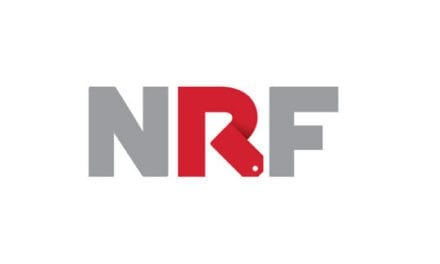A New Petroleum Supply Pattern May Be Developing
- All petroleum prices fell last week.
- The Israeli-Irani confrontation has been muted
- Hopes are rising for less volatile geopolitical oil markets
- U.S. natural gas being diverted to foreign markets
Sincerely
Alan Levine, Chair
Powerhouse
(202) 333-5380
The Matrix
Markets can have short memories. Oil prices did not spiral out of control following Iran’s ineffective attempt to attack Israel. On the contrary, prices fell for all major petroleum futures.
Front month WTI crude oil futures fell $2.52 per barrel for the week ended April 19. Prices settled at $83.14. The range between $67.98 and the recent high of $95.03, established in September 2023, was not challenged.
Petroleum product prices did not set new trends either. Gasoline settled a weekly loss of $0.1413. The high of $2.9649, seen last August, moved further away.
Buyers for next winter benefitted from a weekly loss of $0.1438 in distillate fuel oil spot futures. There is little indication of a bottom starting to develop in prices, but decreases in distillate fuel oil inventories could become bullish for prices.
The muted reaction of markets to the Israeli-Irani confrontation last week would have been unimaginable even a short time ago.
Recent events in the Middle East and North Africa, (MENA) and Israel and Iran are causing a reassessment of the significance of MENA oil to global supply and regional alignments.
Analysts are attributing the reactions to a host of factors. They reach one conclusion. A single paragraph in a review of regional events used the words, “reconciliation,” “measured response,” “regional stability,” and “genuinely cooperative regional order,” to describe its hopes for calm and even peace in the area.
Iran’s attack was repelled by Israel, traditional allies and even some Arab states (Saudi Arabia and Jordan). The rivalries do not all involve Israel either. There have been civil wars in Libya, Syria and Yemen. Traditional regional leaders like Egypt and Saudi Arabia have been weakened; Turkey and lran have become more muscular.
Contrarian thinking may be in order. Bilateral ties that had been sundered since the Arab Spring appear to be on the mend. Qatar is now in good stead with Saudi Arabia and Egypt. The UAE and Egypt are restoring diplomatic ties with Turkey. And Iran and Saudi Arabia have met informally for dialog.
MENA is a notoriously complex region to understand. Today’s enemy is tomorrow’s friend. Regional reproachment may be no more than a recognition of the costs of conflict, and the loss of potential trade in a safer environment.
The implications for oil prices are not clear. Growth of the shale oil industry and gains in U.S. exports are playing a role too. Still, some financial houses continue to project a $90 to $95 crude oil price later this year.
Nothing is ever final in oil country. But it would be a mistake to disregard the calming, lower volatility implications of recent events in the Middle East and North Africa.
Supply/Demand Balances
Supply/demand data in the United States for the week ended April 12, 2024, were released by the Energy Information Administration.
Total commercial stocks of petroleum increased (⬆) 10 million barrels to 1.2375 billion barrels during the week ended April 12, 2024.
Commercial crude oil supplies in the United States were higher (⬆) by 2.7 million barrels from the previous report week to 460 million barrels.
Crude oil inventory changes by PAD District:
PADD 1: Up (⬆) 0.7 million barrels at 8.6 million barrels
PADD 2: Down (⬇) 0.9 million barrels to 119 million barrels
PADD 3: Up (⬆) 3.4 million barrels to 260.9 million barrels
PADD 4: Down (⬇) 0.3 million barrels at 25.5 million barrels
PADD 5: Down (⬇) 0.2 million barrels to 46 million barrels
Cushing, Oklahoma, inventories were unchanged (=) at 33 million barrels.
Domestic crude oil production was unchanged (=) at 13.1 million barrels daily.
Crude oil imports averaged 6.461 million barrels per day, a daily increase (⬆) of 27,000 barrels. Exports increased (⬆) 2.018 million barrels daily to 4.726 million barrels per day.
Refineries used 88.1% of capacity; 0.2 percentage points lower (⬇) than the previous report week.
Crude oil inputs to refineries increased (⬆) 131,000 barrels daily; there were 15.913 million barrels per day of crude oil run to facilities. Gross inputs, which include blending stocks, increased (⬆) 35,000 barrels daily to 16.228 million barrels daily.
Total petroleum product inventories increased (⬆) by 7.3 million barrels from the previous report week, up to 777.5 million barrels.
Total product demand decreased (⬇) 16,000 barrels daily to 19.22 million barrels per day.
Gasoline stocks decreased (⬇) 1.2 million barrels from the previous report week; total stocks are 227.4 million barrels.
Demand for gasoline increased (⬆) 50,000 barrels per day to 8.662 million barrels per day.
Distillate fuel oil stocks decrease (⬇) 2.8 million barrels from the previous report week; distillate stocks are at 115 million barrels. EIA reported national distillate demand at 3.666 million barrels per day during the report week, an increase (⬆) of 680,000 barrels daily.
Propane stocks rose (⬆) 4 million barrels from the previous report to 55.7 million barrels. The report estimated current demand at 675,000 barrels per day, a decrease (⬇) of 630,000 barrels daily from the previous report week.
Natural Gas
Spot futures Henry Hub natural gas made no headway in last week’s trading. Prices settled at $1.752, slightly lower than during the previous week. And values continue to print near the significant $1.600 low established in February.
Prices have traded indecisively since then. Narrow ranges and directionless trading have been the norm. Standard technical indicators have not signaled changes either. There may be some narrowing of Bollinger Bands, but no directional shifts yet Elliott Wave analysis has been unfocused too. Prices have traced a series of corrective moves.
The reality of markets is they do not remain the same. No change may now be projected, but something will happen to induce change.
One problem for price bulls is the continuing surplus of natural gas supply in storage. Data for the week ended April 12 showed 50 Bcf added to supply. Perhaps more important, however, is that stocks in underground storage are 36% higher than the average of the past five years. This excess should be reduced if a bullish trend develops.
This reduction could happen in different ways. Domestic demand could recover, supply could be reduced through lower production or the diversion of supply to foreign markets.
DOE’s estimates of natural gas supply suggest some of that may be happening. Marketed production fell during the report week, as did total supply. And the increase in LNG exports has been discussed here recently.
2023 was a record year for exports of natural gas. Nearly 21 billion Bcf left the United States. It was a 10% increase over 2022 and LNG accounted for more than half of U.S. outflows. The rest was sent largely by pipeline to Canada and Mexico. LNG exports grew 12% during the year, reaching 13.6 Bcf/d last December. Europe was the largest recipient of LNG last year, 2.4 Bcf/d. The gain reflected European reaction to the invasion of Ukraine in February 2022. Many EU countries halted shipments from Russia and developing regasification projects previously left dormant. Most notably Germany but also the Netherlands, Spain and others added 3.2 Bcf/d last year. Further additions are expected in 2024.
According to the EIA:
- Net injections into storage totaled 24 Bcf for the week ended April 5, on par with the five-year (2019–2023) average net injections of 24 Bcf and higher than last year’s net injections of 11 Bcf during the same week. Working natural gas stocks totaled 2,283 Bcf, which is 633 Bcf (38%) more than the five-year average and 435 Bcf (24%) more than last year at this time.
- According to The Desk survey of natural gas analysts, estimates of the weekly net change to working natural gas stocks ranged from no net change to net injections of 18 Bcf, with a median estimate of net injections of 13 Bcf.
Was this helpful? We’d like your feedback.
Please respond to [email protected]
This material has been prepared by a sales or trading employee or agent of Powerhouse Brokers, LLC and is, or is in the nature of, a solicitation. This material is not a research report prepared by Powerhouse Brokers, LLC. By accepting this communication, you agree that you are an experienced user of the futures markets, capable of making independent trading decisions, and agree that you are not, and will not, rely solely on this communication in making trading decisions.
DISTRIBUTION IN SOME JURISDICTIONS MAY BE PROHIBITED OR RESTRICTED BY LAW. PERSONS IN POSSESSION OF THIS COMMUNICATION INDIRECTLY SHOULD INFORM THEMSELVES ABOUT AND OBSERVE ANY SUCH PROHIBITION OR RESTRICTIONS. TO THE EXTENT THAT YOU HAVE RECEIVED THIS COMMUNICATION INDIRECTLY AND SOLICITATIONS ARE PROHIBITED IN YOUR JURISDICTION WITHOUT REGISTRATION, THE MARKET COMMENTARY IN THIS COMMUNICATION SHOULD NOT BE CONSIDERED A SOLICITATION.
The risk of loss in trading futures and/or options is substantial and each investor and/or trader must consider whether this is a suitable investment. Past performance, whether actual or indicated by simulated historical tests of strategies, is not indicative of future results. Trading advice is based on information taken from trades and statistical services and other sources that Powerhouse Brokers, LLC believes are reliable. We do not guarantee that such information is accurate or complete and it should not be relied upon as such. Trading advice reflects our good faith judgment at a specific time and is subject to change without notice. There is no guarantee that the advice we give will result in profitable trades.
Copyright 2024 Powerhouse Brokers, LLC, All rights reserved












